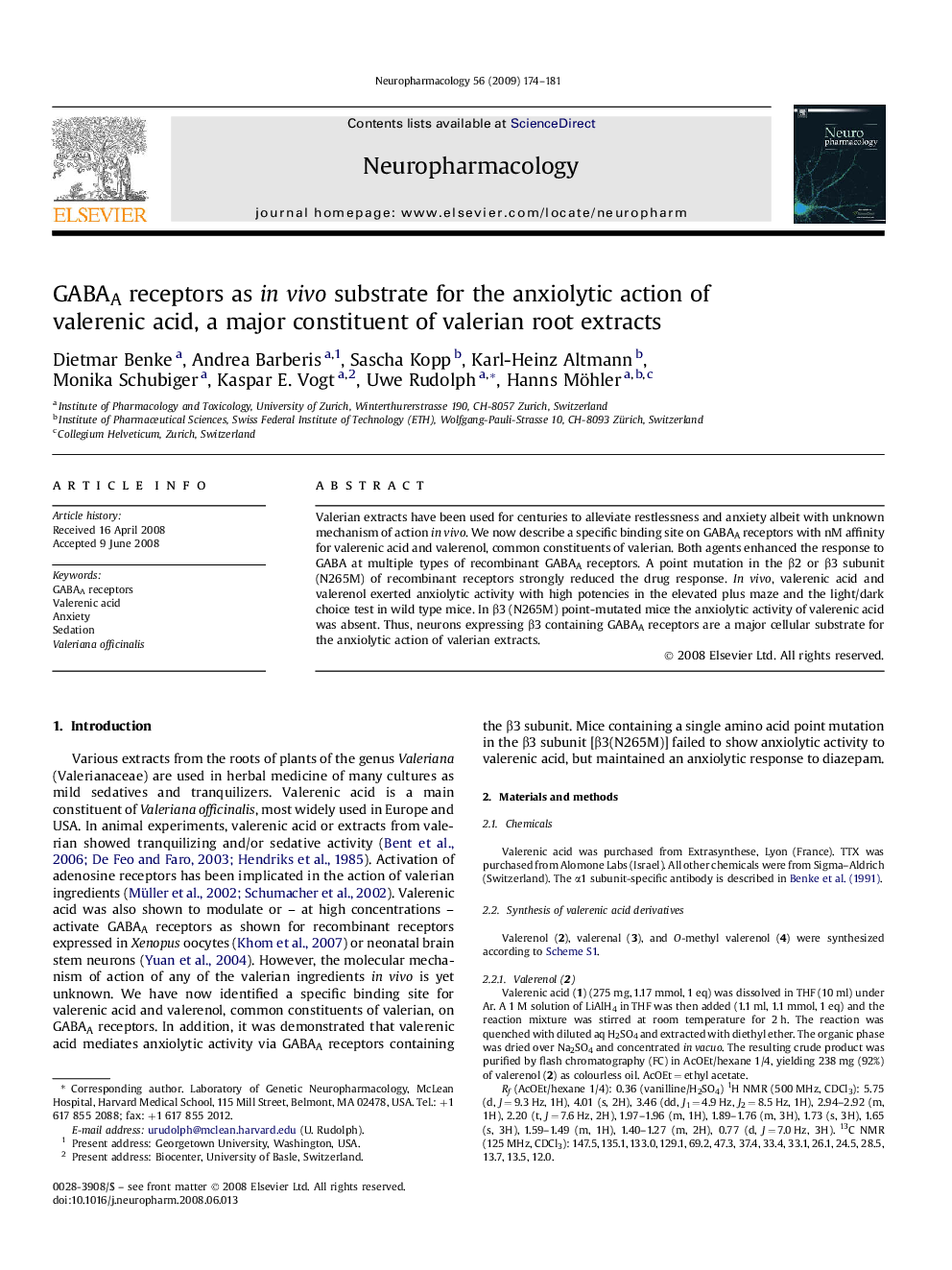| Article ID | Journal | Published Year | Pages | File Type |
|---|---|---|---|---|
| 5816172 | Neuropharmacology | 2009 | 8 Pages |
Abstract
Valerian extracts have been used for centuries to alleviate restlessness and anxiety albeit with unknown mechanism of action in vivo. We now describe a specific binding site on GABAA receptors with nM affinity for valerenic acid and valerenol, common constituents of valerian. Both agents enhanced the response to GABA at multiple types of recombinant GABAA receptors. A point mutation in the β2 or β3 subunit (N265M) of recombinant receptors strongly reduced the drug response. In vivo, valerenic acid and valerenol exerted anxiolytic activity with high potencies in the elevated plus maze and the light/dark choice test in wild type mice. In β3 (N265M) point-mutated mice the anxiolytic activity of valerenic acid was absent. Thus, neurons expressing β3 containing GABAA receptors are a major cellular substrate for the anxiolytic action of valerian extracts.
Related Topics
Life Sciences
Neuroscience
Behavioral Neuroscience
Authors
Dietmar Benke, Andrea Barberis, Sascha Kopp, Karl-Heinz Altmann, Monika Schubiger, Kaspar E. Vogt, Uwe Rudolph, Hanns Möhler,
